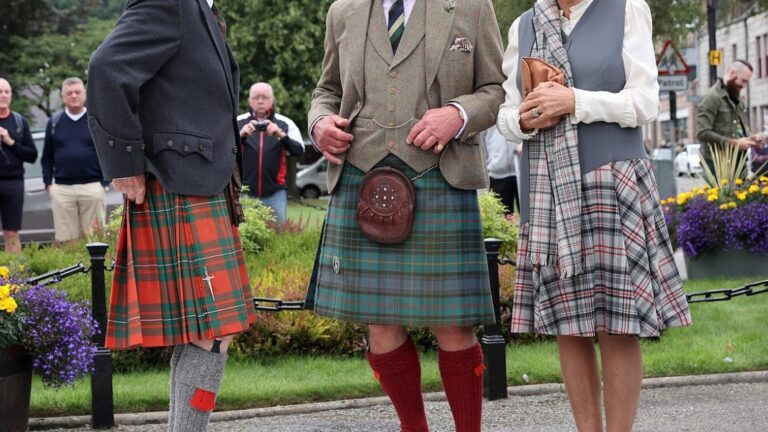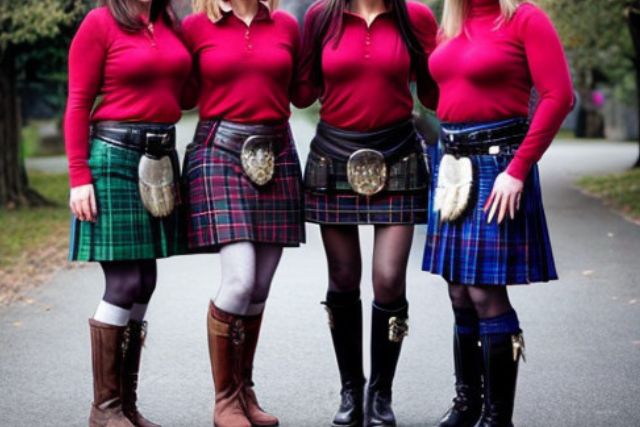Immerse yourself in the rich tapestry of Scottish culture as we delve into the captivating world of Scottish symbols. From the iconic Saltire proudly waving in the wind to the majestic thistle representing the nation’s resilience, each symbol we explore tells a story of Scotland’s vibrant heritage. Prepare to be enchanted by the haunting melodies of the bagpipes and intrigued by the age-old mystery of the Loch Ness Monster. Join us on this journey of discovery as we uncover the essence of Scotland through its cherished symbols.
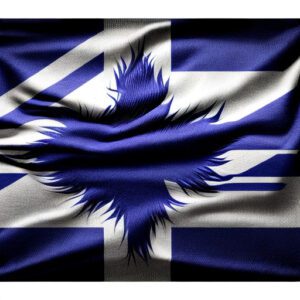
1# The Saltire – Scotland’s National Flag
One of the most iconic symbols of Scotland is the Saltire, the national flag of the country. The Saltire, also known as the St. Andrew’s Cross, is a white diagonal cross on a blue background. It represents the crucifixion of Saint Andrew, the patron saint of Scotland. The flag has been used since the 9th century and is deeply rooted in Scottish history and culture. It is one of the oldest national flags in the world that is still in use today.
The Saltire holds great significance for the people of Scotland. It is a symbol of national pride, unity, and identity. The blue background represents the sky and the sea, which are integral parts of Scotland’s landscape. The white cross represents peace, purity, and the Christian faith. The Saltire is proudly displayed on buildings, flown at events and ceremonies, and worn by Scottish athletes and teams.
As a national symbol, the Saltire embodies the values and traditions of Scotland. It evokes a sense of belonging and serves as a reminder of the country’s rich heritage. The flag also represents the resilience and determination of the Scottish people. It is a symbol of protection and strength, standing as a testament to Scotland’s enduring spirit.

In addition to its national significance, the Saltire is also recognized internationally. It is often used to represent Scotland in various contexts, including sporting events and diplomatic occasions. The Saltire is a powerful symbol that evokes a sense of Scottish pride and serves as a visual representation of Scotland’s unique culture and history.
2# The Thistle – A Symbol of Scotland
The Thistle, along with the Saltire, is a symbol of Scotland and represents the resilience and strength of the Scottish people. The Thistle has been an important emblem of Scotland since the 13th century, when it was adopted as the national flower. This prickly plant is known for its ability to thrive in harsh conditions, much like the Scottish people themselves. The Thistle symbolizes the determination and tenacity of the Scots, who have faced countless challenges throughout history. It is a reminder of their ability to overcome adversity and their unwavering spirit. The Thistle also represents Scotland’s natural beauty and unique identity. Its distinctive appearance and vibrant purple blooms make it instantly recognizable and deeply connected to the Scottish landscape. The Thistle is a symbol that unites Scots around the world and instills a sense of belonging and pride in their heritage.
- The Thistle symbolizes the resilience and strength of the Scottish people.
- It represents Scotland’s ability to thrive in harsh conditions.
- The Thistle is a reminder of Scotland’s unique identity and natural beauty.

3# The Highland Cow – A Furry Scottish Icon
An enduring symbol of Scotland, the Highland Cow is a furry and beloved icon. With its distinctive long, shaggy hair and impressive horns, this hardy breed of cattle has become synonymous with the rugged beauty of the Scottish Highlands. Known for their adaptability to the harsh Scottish climate, Highland Cows have a strong sense of belonging to the land they roam. To further understand the significance of this Scottish icon, let’s explore some key characteristics of the Highland Cow:
| Characteristic | Description |
|---|---|
| Appearance | Shaggy hair, long horns, sturdy build |
| Temperament | Docile, calm, easygoing |
| Adaptability | Thrives in rough terrain, endures harsh weather conditions |
| Heritage | Ancient breed, historically used by Highland farmers |
| Symbolism | Represents the resilience and spirit of the Scottish Highlands |
![]()
The Highland Cow embodies a sense of nostalgia and pride for the Scottish people, serving as a reminder of their rich cultural heritage and connection to the land. Its presence is not only a symbol of Scotland but also a source of admiration and belonging for those who appreciate its unique beauty.
4# The Bagpipes – The Sound of Scotland
Bagpipes, a quintessential Scottish instrument, have long been heralded as the melodic embodiment of Scotland’s spirit and heritage. These iconic instruments are deeply ingrained in Scottish culture and hold a special place in the hearts of Scots worldwide. The distinctive sound of bagpipes evokes a sense of belonging and pride, instantly transporting listeners to the rugged landscapes of the Scottish Highlands.
- The bagpipes are often played at traditional Scottish events and celebrations, including weddings, funerals, and Highland games.
- They have a rich history dating back centuries, with references to bagpipes in Scottish literature and art as early as the 15th century.
- Bagpipe music is known for its unique blend of haunting melodies and powerful, rhythmic drones, creating a truly mesmerizing and soul-stirring experience.
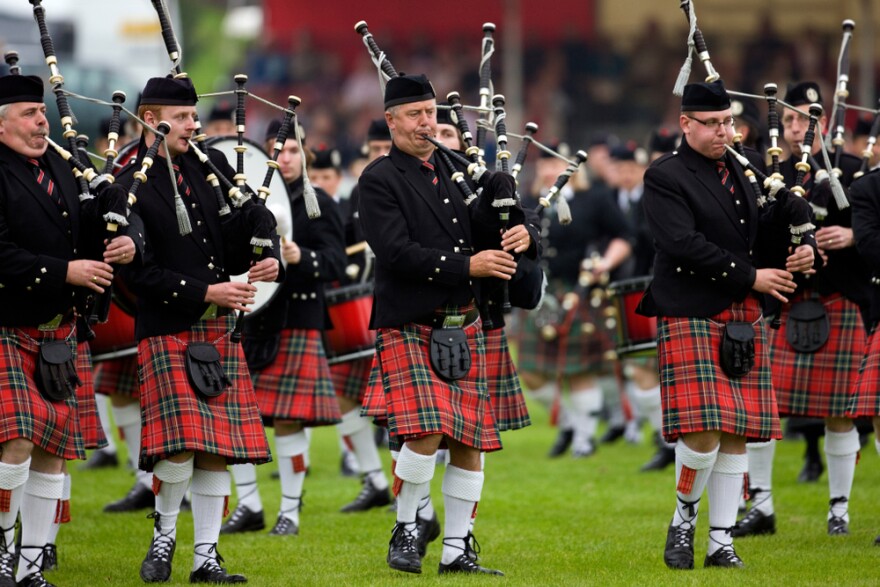
Whether played solo or as part of a pipe band, the sound of the bagpipes resonates deep within the Scottish soul, reinforcing the strong sense of identity and belonging that is synonymous with Scotland.
5# The Loch Ness Monster – Myth or Legend
Amidst the misty depths of Loch Ness, speculation and intrigue surround the elusive creature said to inhabit its waters. The Loch Ness Monster, also known as Nessie, has become an iconic symbol of Scotland, captivating the imaginations of locals and visitors alike. Descriptions of Nessie vary, with some claiming it to be a large aquatic dinosaur-like creature, while others believe it to be a more subtle and elusive presence. Numerous eyewitness accounts, photographs, and sonar readings have fueled the ongoing debate about the existence of Nessie. While skeptics dismiss the sightings as mere hoaxes or misidentifications, believers argue that the Loch Ness Monster is a true Scottish legend, representing the mystery and enchantment of the Scottish Highlands. Regardless of its reality, the Loch Ness Monster continues to be a symbol of national pride and intrigue, drawing tourists from around the world to the shores of Loch Ness in search of the truth.
6# The Kilt – Traditional Scottish Attire
With its rich history and cultural significance, the kilt remains a quintessential symbol of Scottish heritage and identity. This traditional Scottish attire, known for its distinctive tartan patterns and knee-length design, holds a special place in the hearts of Scots both at home and abroad. The kilt represents a sense of belonging and pride in one’s Scottish roots, evoking a strong connection to the country’s rugged landscapes and storied past. Wearing a kilt not only showcases a person’s Scottish heritage but also serves as a visual reminder of the traditions and values held dear by the Scottish people. It is a way of expressing cultural identity and celebrating the unique customs that have been passed down through generations. The kilt truly embodies the spirit of Scotland.

- The tartan patterns of the kilt represent different Scottish clans and families, connecting wearers to their ancestral history.
- The kilt is often worn during traditional Scottish events and celebrations, further reinforcing its cultural significance.
- Modern variations of the kilt have emerged, allowing individuals to express their personal style while still honoring Scottish traditions.
7# The Celtic Cross – A Symbol of Faith
As a powerful symbol of faith, the Celtic Cross holds deep spiritual meaning for the Scottish people. The Celtic Cross, also known as the Irish Cross, is a unique representation of Christianity that combines the traditional Christian cross with elements of Celtic artwork. This distinctive design features a cross with a circle intersecting the arms, symbolizing the eternal love of God. The Celtic Cross is believed to have originated in Scotland and Ireland during the early medieval period. It serves as a reminder of the strong Celtic Christian heritage and the enduring devotion to the Christian faith. For the Scottish people, the Celtic Cross represents their deep connection to their religious roots and their sense of belonging within the wider Christian community. It is a symbol that unites, inspires, and offers solace in times of spiritual need.
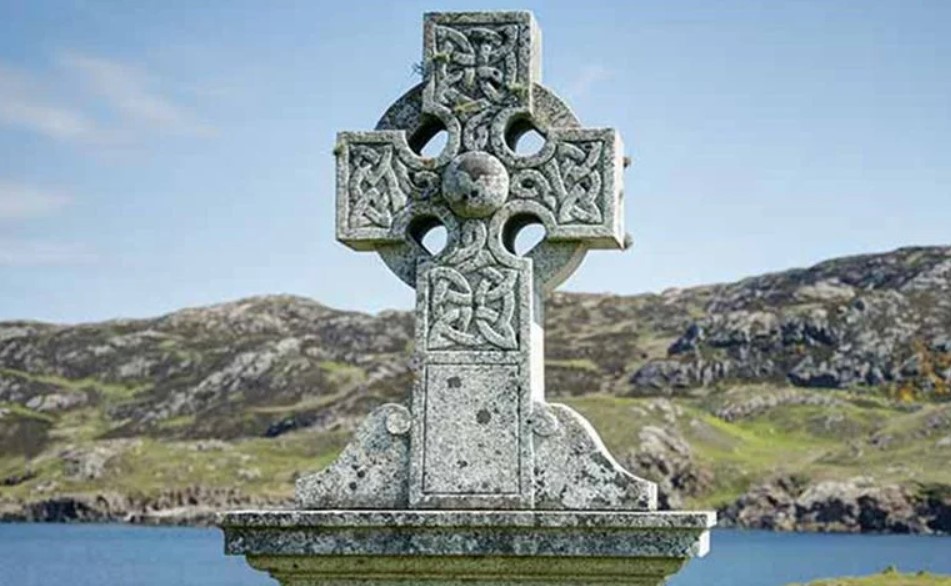
8# The Scottish Clan Tartan – A Pattern of Heritage
The Scottish clan tartan is a significant pattern that represents the rich heritage of Scottish clans. It is not just a mere design but a symbol of pride, identity, and belonging for the Scottish people. The tartan is a unique pattern of colors and stripes that is specific to each clan, reflecting their history, values, and traditions. It is woven into the fabric of Scottish society, serving as a visual reminder of their ancestral roots and shared heritage. The clan tartan is cherished by Scots around the world, as it connects them to their past and instills a sense of unity and community. It is a powerful symbol that allows individuals to express their Scottish identity and find a sense of belonging within their clan.
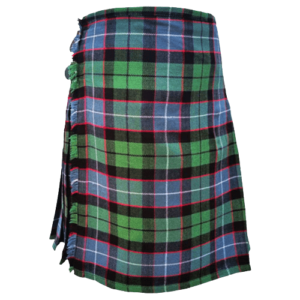
9# The Edinburgh Castle – A Historic Fortress
Situated atop Castle Rock, the Edinburgh Castle stands as a historic fortress that has played a pivotal role in Scottish history. This iconic landmark has witnessed countless battles, sieges, and royal ceremonies, making it a symbol of strength and resilience for the Scottish people. The castle, with its strategic position overlooking the city of Edinburgh, has served as a military stronghold since ancient times. Its impressive architecture reflects the various periods of its existence, from the medieval fortress to the elegant Renaissance palace. Inside its walls, visitors can explore the Crown Jewels of Scotland, the Stone of Destiny, and the National War Museum, all of which offer a glimpse into the rich heritage and bravery of the Scottish nation. The Edinburgh Castle stands as a testament to the indomitable spirit and deep-rooted history that defines Scotland and its people.
10# The St. Andrew’s Cross – Patron Saint of Scotland
With its distinctive white diagonal cross on a blue background, the St. Andrew’s Cross is a powerful symbol of Scotland, representing the country’s patron saint. Legend has it that St. Andrew, one of the twelve apostles of Jesus, was crucified on an X-shaped cross, which is now known as the St. Andrew’s Cross. This symbol holds great significance for the Scottish people, as St. Andrew is not only their patron saint but also the brother of St. Peter, the founder of the Christian Church. The St. Andrew’s Cross serves as a reminder of Scotland’s strong Christian heritage and the values that the country holds dear. It is a symbol of unity, faith, and national identity, instilling a sense of belonging and pride in the hearts of the Scottish people.
11# The Scottish Gaelic Language – Preserving Ancient Traditions
Largely spoken in the Highlands and Islands, the Scottish Gaelic language continues to play a vital role in preserving ancient traditions. With its roots in the Celtic language family, Scottish Gaelic is one of the three indigenous languages of Scotland, alongside Scots and English. Despite its decline in the past due to historical events such as the Highland Clearances and the imposition of English, efforts have been made to revive and promote the language. Today, there are Gaelic-medium schools, cultural organizations, and initiatives aimed at preserving and revitalizing the language. Scottish Gaelic is not just a means of communication, but a key to unlocking the rich cultural heritage of the Scottish people. It connects individuals to their roots, fostering a sense of belonging and pride in their heritage.
12# The Unicorn – Scotland’s National Animal
One of the most iconic symbols of Scotland is the unicorn, which has been recognized as the country’s national animal. The unicorn holds a special place in Scottish culture and history, representing strength, nobility, and purity. Here are three reasons why the unicorn is a significant symbol in Scotland:
- Mythical Creature: The unicorn is a mythical creature that has been associated with Scotland for centuries. It is said to possess magical powers and is often depicted as a majestic and untamed beast.
- Royal Symbol: The unicorn has long been associated with royalty in Scotland. It has been featured in the Scottish coat of arms since the 12th century, symbolizing the power and authority of the Scottish monarchy.
- Uniqueness and Individuality: The choice of the unicorn as Scotland’s national animal reflects the country’s desire to stand out and embrace its own distinct identity. The unicorn represents Scotland’s unique and independent spirit, making it a symbol of pride and belonging for Scots around the world.
The unicorn serves as a powerful symbol of Scotland’s rich history, heritage, and national identity.
13# The Stone of Scone – A Coronation Symbol
The Stone of Scone, also known as the Stone of Destiny, holds great significance as a coronation symbol in Scottish history and tradition. This ancient stone, believed to have been used in the coronation ceremonies of Scottish monarchs for centuries, is deeply embedded in the Scottish identity. Its importance is reflected in the emotions it evokes in the Scottish people, symbolizing their connection to their past and their sense of national pride. To further illustrate its significance, consider the following table:
| Symbol | Significance | Emotion |
|---|---|---|
| Stone | Ancient | Awe |
| Historical | Respect | |
| Traditional | Reverence |
These emotions, evoked by the Stone of Scone, contribute to the sense of belonging and shared heritage that is cherished by the Scottish people.
14# The Scottish Highland Games – Celebrating Strength and Skill
During the Scottish Highland Games, participants showcase their strength and skill in a variety of traditional athletic competitions. These games, deeply rooted in Scottish culture, bring together individuals from across the country and beyond to celebrate their shared heritage and demonstrate their physical prowess. From throwing heavy objects to competing in races, the Highland Games offer a platform for athletes to demonstrate their abilities in a range of disciplines.
- Caber Toss: In this iconic event, athletes attempt to toss a large wooden pole, known as a caber, end over end. It requires not only strength but also precision and balance.
- Hammer Throw: Participants spin in a circle and release a heavy hammer, trying to achieve maximum distance. This event showcases the competitors’ strength and technique.
- Tug of War: Teams of strong individuals compete by pulling on opposite ends of a rope, aiming to drag their opponents across a designated line. This event highlights both physical strength and teamwork.
These games provide a sense of belonging and camaraderie, uniting participants and spectators alike in the celebration of Scottish culture and heritage.
15# The Burns Supper – Honoring Scotland’s National Poet
An integral part of Scottish culture, the Burns Supper is a traditional event that honors Scotland’s national poet, Robert Burns. This annual celebration takes place on or around January 25th, which marks the poet’s birthday. The Burns Supper is a formal affair that typically begins with the recitation of Burns’ most famous poem, “Address to a Haggis.” A key component of the supper is the serving of haggis, a traditional Scottish dish made from sheep’s offal, suet, and oatmeal. The event also includes the drinking of Scotch whisky, the singing of Burns’ songs, and the recitation of his poetry. The supper is often accompanied by bagpipe music and Scottish dancing, creating a festive and authentic atmosphere that allows participants to feel a sense of belonging to Scotland’s rich cultural heritage.
Frequently Asked Questions
What Is the Significance of the Thistle as a Symbol of Scotland?
The thistle has long been recognized as a symbol of Scotland due to its historical significance and association with the country’s resilience and strength. Its prickly nature represents the fierce defense of Scottish territory and the enduring spirit of its people.
How Did the Bagpipes Become Associated With Scotland?
The association of bagpipes with Scotland dates back centuries, with origins traced to ancient cultures. Over time, the instrument became deeply ingrained in Scottish culture and played a significant role in military and social gatherings, solidifying its status as a symbol of Scottish heritage.
Is There Any Evidence to Support the Existence of the Loch Ness Monster?
There is no concrete evidence to support the existence of the Loch Ness Monster. Despite numerous reported sightings, no scientific proof has been found. The legend continues to capture the imagination of many, but it remains a topic of debate and speculation.
Why Is the Kilt Considered Traditional Scottish Attire?
The kilt is considered traditional Scottish attire due to its historical significance and cultural importance. It is a symbol of Scottish identity and heritage, representing clan affiliations and the rugged beauty of the Scottish landscape.
What Is the History Behind the Stone of Scone as a Coronation Symbol?
The Stone of Scone, also known as the Stone of Destiny, has a rich history as a symbol of Scottish monarchy. Its origins can be traced back to ancient times, and it has been used in coronation ceremonies for centuries.

